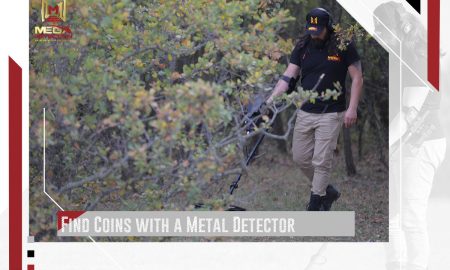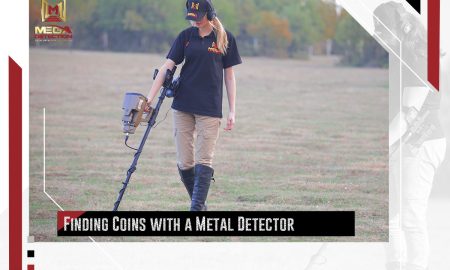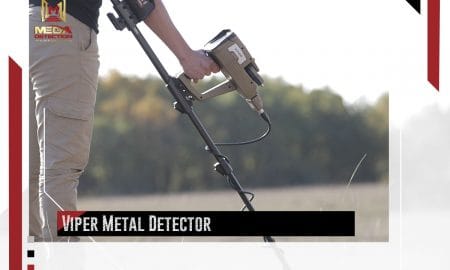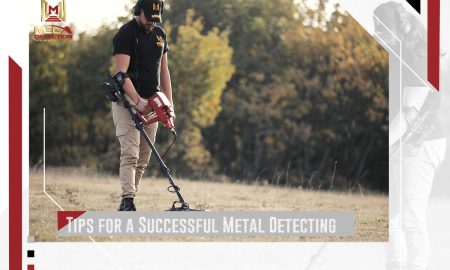Beach Detecting
Beach Detecting , let’s look at some basic tips an individual can employ in maximising the collection of those tiny gold from the beaches. If you learn to do it properly, you might be quite surprised with how much gold you actually are able to recover.
First and foremost, you should not be in a hurry to process the sand from the beaches. Miners can have a tendency to work fast in an effort to process as much material as possible. This is generally a pretty good idea, but when mining beach sands it will cause you all sorts of troubles.
The gold bearing sands along the Pacific Ocean beaches are heavily made up of black sands. These are heavier iron minerals that weigh more that normal sand, and they will overload your gear if you feed it too quickly. Instead, feed sand into your equipment at a measured, even pace that gives the sand proper time to sort over the riffles.
Ensure that the equipment to be used is properly setup for fine gold recovery. The only way to do this with consistency is with a lot of trial and error until you get things right. However, talking with other prospectors who mine beach sands in your areas can really help.
Even with beach sands, classifying is very important because you will still find occasional rocks, sticks, seashells and other fragments that will effect your sluice. In fact classifying is even more important with beach mining because even the slightest disturbances can blow that fine gold right out of your sluice.
If your area allows it, a battery-powered bilge pump to operate the beach sluices works really well. Miners in Alaska and Washington generally prefer this setup with either a sluice or a Gold Cube. Unfortunately the laws in Oregon do not allow any types of motors so pumps cannot be used.
The equipment being used must also be cleaned frequently as this would help to avoid clogged riffles. Again, you will need to do some experimentation to determine just how frequently you need to do a clean up, since this will vary a lot depending on the concentration of black sands in your mix.
Beach sand is certainly not all the same. Seek out darker sands that have a higher composition of hematite, magnetite, and the other black sands. This is where the gold is hiding.
You will find that black sands will form in layers and bands within the sand. Digging a hole straight down will often show that there are several different pay layers. Some may be very rich while others may be almost completely devoid of gold. Only run the richest material to maximize your time.
Do a personal study of the beach you intend to prospect and look for places that look like they would be good to set up. Personally I like to be away from the crowds, so I will avoid parking areas and the more popular tourist beaches in favor of more secluded locations.
Since some beach they have restrictions on mining activity. One of these restrictions is that you cannot use any motorized equipment and this even includes small electric pumps. It’s really too bad since these little pumps don’t make much noise and they sure make mining beach sands a lot easier.
In this case your best bet is to use a sluice box. Since you need consistent flow in one direction (which the ocean does not provide) you will need to seek out a small feeder stream flowing into the ocean. Fortunately there are many of these along the coastline during most of the years since there is so much rain here. It still does limit you somewhat, but it is your best option.
Where a sluice box is used, prospectors must make sure there is consistence in the flow of water for sluicing by setting up a box where the creek or river joins the ocean as this would enable the sand to run through and reasonable gold can be recovered in the process.
When to go beach metal detecting
When detecting the dry sand such as towel lines and high activity spots there are two really good times to detect.
If you are an early riser then get to the beach first thing in the morning before it gets too busy and detect where people would have been the day before.
If you prefer to start your day later then get there at the end of the beach day when people are leaving and the beach is less populated. That way you will be one of the first to detect right after the crowds are gone and you won’t be detecting around people.
Beach metal detecting the low tide will depend on your local tidal patterns so it is always good to check the internet for low tide times in your area. Once you know this, try and get there 30 minutes before low tide so you can set up and be fully ready for some beach metal detecting.
After storms is another excellent time to detect the beach, because storms will churn up and move sand around which can bring targets up from the deep into shallower parts of the beach.
Detect after a king tide as this can yield similar results as detecting after a storm. As the sand is moved around, it can often bring up long lost targets.
The Gridding Technique
This is a technique used by beach detectorists the world over. It is a tried and proven method that will mean you don’t leave any gaps in coverage, ensuring you will yield more targets and not leave any treasure behind.
To do it properly, walk in a straight line in one direction. At the end of your section, turn around, move just under a full swing right or left, and walk back in the opposite direction. Make sure to overlap your swing with the last run to ensure you don’t have any gaps which may lead to missing a great find.
Once you have covered your section in both directions, go over it again at a perpendicular angle (90 degrees) to make sure you haven’t left anything behind. Once you have completed a section, move on to another part of the beach to grid another section.
To ensure you are detecting in a nice straight line, if your detecting scoop has a long handle then drag it behind you so you can see where you have been. If you are using a hand scoop, you can tie a cord around your waist and pull a heavy object like a large fishing sinker so you can see the trail of where you have been.
Dry Sand vs Wet Sand
When metal detecting on a beach it is important to know that a detector will react differently to dry sand compared to wet sand.
Dry sand detecting is a lot of fun and can be done with pretty much any metal detector. Dry sand areas often mean there is a large amount of traffic so be prepared to dig your fair share of trash to get to the good targets.
Digging trash isn’t as bad as it sounds as it helps to really get to know your detector, target IDs and the sounds it makes on different targets.
Using a metal detector that has discrimination or notching modes can help you dig less trash by “discriminating” out unwanted targets. This basically entails you telling the detector what type of metal you want to ignore.
Using discrimination takes practice and if you are not careful you run the risk of ignoring a good target if it is made from a similar metal as the unwanted target. Because of this we recommend digging every signal until you really have a good feel for your detector.
Wet sand detecting can be more of a challenge but can yield excellent results and much less trash. Wet sand can be difficult for most detectors due to salt and minerals, which can cause either false signals or a very chatty detector, neither of which are fun.
So it’s good to note that not all detectors can handle wet sand and salt water. When choosing a detector for wet sand you need to choose either a continuous multi frequency detector or a detector that you can ground balance to salt water and have adjustable sensitivity to help cut out unwanted chatter and false signals.












Comment (1)
[…] Beach Detecting , let’s look at some basic tips an individual can employ in maximising the collection of those tiny gold from the be […]